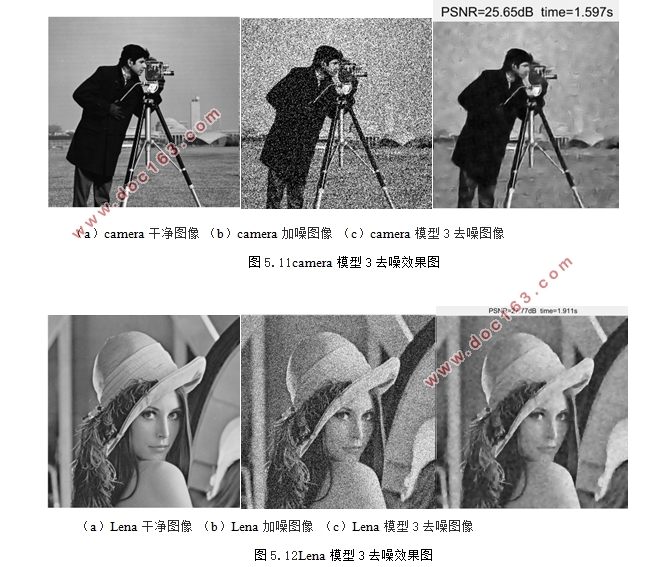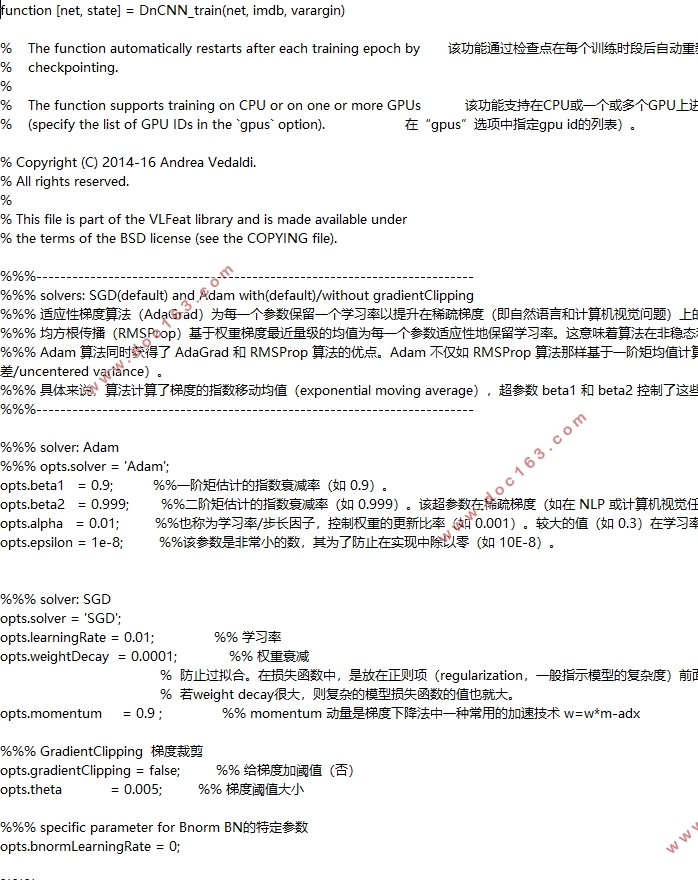基于残差学习与卷积神经网络的图像去噪方法研究

基于残差学习与卷积神经网络的图像去噪方法研究(论文20000字,外文翻译)
摘要:数字图像在获取、传输等过程中不可避免地会受到噪声的影响,为了抑制噪声,对图像进行去噪成为图像处理的关键步骤之一。BM3D去噪算法是效果较为明显的,不过在去噪耗时上仍有不足。随着深度学习的发展,神经网络逐渐用于图像去噪,此类方法去噪效果较为优秀,耗时也较短。随着神经网络层数加深,特征提取就越复杂,训练难度越大,网络先达到最优状态,然后开始退化,还会出现梯度消失等问题。针对这一问题,本文分别利用残差学习和卷积神经网络构建去噪新模型,通过残差学习增加网络训练深度,同时利用残差图像中的图像结构信息,提高去噪效果,结果显示,相比于BM3D算法,本文基于残差学习与卷积神经网络的图像去噪算法的去噪效果更为突出,去噪耗时也大大降低。
关键词:图像去噪;深度学习;卷积神经网络;残差学习
Study on Image Denoising Method Based on Residual Learning and Convolutional Neural Network
Abstract:Digital image will be affected by noise in the process of acquisition and transmission. In order to suppress noise, image denoising has become one of the key steps of image processing. BM3D is effective,butBM3Ddon’t do well in the time-consuming. With the development of deep learning, neural network is gradually used in image denoising. This method has better denoising effect and shorter time-consuming.With the layers of the neural network getting deeper, thefeature extraction becomes more complex andthe training of neural network becomes more difficult.The network first achieves its optimal state and then begins to degenerate, and there will be some problems such as the disappearance of gradients.In order to solve this problem, a new denoising model is constructed by residual learning and convolution neural network. The training depth of the network is increased by residual learning. Meanwhile,the image structure information of residual image can be used to improve the denoising effect.The results show that, compared with BM3D algorithm, the image denoising algorithm based on residual learning and convolution neural network is more effective, and the denoising time is greatly reduced.
Key words:Image Denoising;Deep Learning;Convolutional Neural Network;Residual Learning
[资料来源:http://Doc163.com]


目 录
1 绪论 1
1.1研究背景及意义 1
1.2国内外研究现状 2
2 图像去噪理论基础 4
2.1噪声模型 4
2.2常见噪声类型 4
2.3常用去噪方法 5
2.3.1 经典去噪方法 5
2.3.2 小波变换 6
2.3.3 非局部均值去噪算法(NLM) 7
2.3.4 三维块匹配图像去噪算法(BM3D) 7
3 人工神经网络基本理论 9
[资料来源:www.doc163.com]
3.1 神经网络 9
3.1.1 神经网络基本组成 9
3.1.2 神经网络常见模型 10
3.2 卷积神经网络 11
3.2.1网络结构 11
3.2.2网络特点 12
3.2.3卷积神经网络的训练过程 12
4 基于卷积神经网络的图像去噪方法 13
4.1 去噪网络的一般结构 13
4.2 卷积神经网络去噪 13
5 基于残差学习的图像去噪方法 21
5.1残差学习 21
5.2残差学习的应用 21
6 基于残差学习与卷积神经网络的图像去噪方法 30
6.1去噪网络框架 30
6.2 基于残差学习与卷积神经网络的图像去噪方法 31
7 新算法实验参数设置与结果 33
7.1实验设置 33
7.2网络参数设置 33
7.3实验结果与对比 33
7.3.1 实验结果 33
7.3.2 去噪图像 35
8 总结与展望 43
8.1工作总结 43
8.2工作展望 43
参考文献 44
致谢 46 [来源:http://www.doc163.com]
